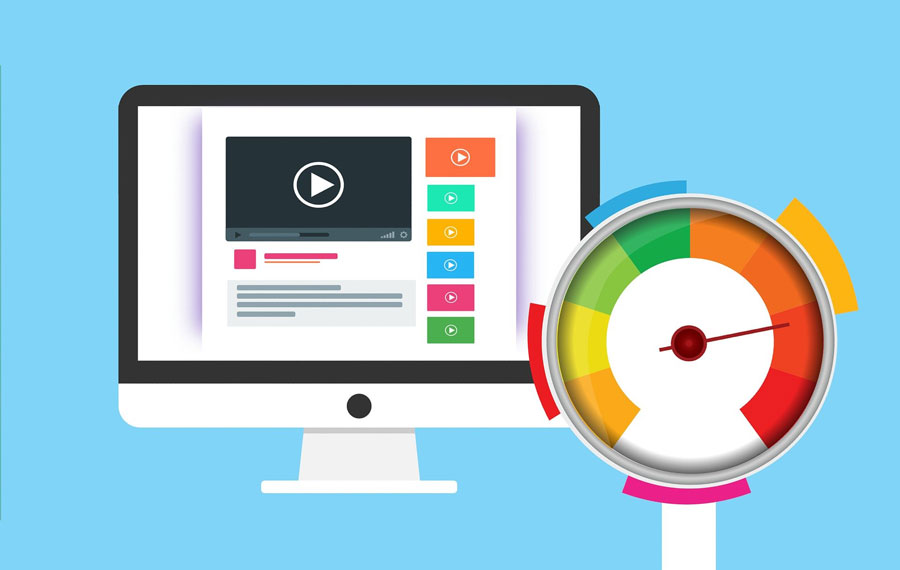Have you ever visited a website that takes ages to load?
If you have, you might be aware how frustrating it can be. As a business, you don’t want your website users to have the same experience due to painfully slow page load times of your website. Users don’t like to wait and will abandon your website if it fails to load in first couple of seconds.
This will increase your bounce rate as more people will hit the back button when they land on your website. As a result, your conversion rate takes a hit and it can have a negative impact on your business revenues. So, how can you fix slow page load time problem?
In this article, you will learn about ways that can help you improve your WordPress website page load time.
1. Minimise HTTP Requests
The first thing you need to do to speed up your WordPress website is to reduce the number of HTTP requests. If your website is sending a lot of HTTP requests to the server while loading, it will add more seconds to your page load time. Try to get rid of the clutter and make your website nimble. Put a limit on the number of files required to display your website. Use as fewer files as possible especially on your most popular pages.
Here is what you need to do to minimise HTTP requests:
- Reduce images and other elements
- Reduce the number of posts per page
- Take advantage of lazy loading
Instead of loading all the images at once, lazy loading only loads up those images that user wants to see and postpones loading of other images. This prevents users from waiting for images to load and delivers a much better user experience. Use images where necessary and avoid going overboard with images as it will add extra seconds to your page load times.
2. Use Content Delivery Network and Caching
A content delivery network is a network of distributed servers located in different regions of the world just like a network of best dedicated servers. It is used to deliver pages and other content based on the geographical location of the user. If a user is accessing your website from Australia, they will get a copy of your website from a server which is located near them. This will shave many seconds off the page load time of your website.
Have you ever noticed that when you visit a website that you have visited before, it tends to load quickly? Yes, that’s because your web browser uses caching. You can also use the same technology to save the webpage and once a user type in your URL, they will be served up with a copy of your website immediately. It makes your website load instantly and improve the overall user experience.
3. Reduce External Scripts
You might have used external scripts to add more functionality to your website. Some of the prime examples of external scripts are social sharing buttons, live chat feature, opt in forms and pop ups and videos embeds. The problem with these external scripts is that it slows down your website especially if you are using many of these scripts.
You don’t want to compromise on your website speed but also want these features? Well, you can get rid of these external scripts and directly code these features into your theme. Get rid of unnecessary external scripts and features that your website doesn’t really need or use. This will have a positive impact on your page load time.
4. Minify Code
When you write code, whether it is HTML, JavaScript or CSS code, it might contain some fluff. It could be in the form of brackets or white spaces. You can remove them. By removing these extra bits, it will make your code difficult to read for other developers but will have a great impact on a website’s page load speed. In most cases, these codes are read by servers and browsers, not developers.
5. Use GZIP Compression
Have you ever tried to throw a piece of paper across the room? How far does it go? Not too far, right. Roll that paper into a small ball and throw it. Now, you would be able to get it far. Same happens with GZIP compression. Compression reduces the file sizes so they take up less space. Once you shrink the file sizes, web pages are downloaded and displayed quickly. This means that it takes fewer seconds for your website to load. The good news is that HTML and stylesheets contain repetitive data which means that it can easily be compressed.
6. Optimise Images and Other Media
As mentioned before, high resolution images, HD videos and other multimedia content can take its toll on your website load times. Moreover, poorly optimised images and multimedia on your website can eats up your bandwidth, bring your website down to its knees and delivers a pathetic user experience. That is why it is important to optimise images and other forms of multimedia.
Before uploading images on your website, make sure you optimise it correctly, compress it and save it in the right format. Take advantage of “Save for web” feature available in most image editing programs. You can use many plugins to optimise images for your WordPress website.
7. Delete Plugins That You Don’t Use
If reducing your page load times is your priority, you should go lite on plugins. Get rid of unnecessary plugins that you don’t need or use. As soon as you uninstall plugins from your website, you will start to feel the difference in page load times. The problems with plugins is that it adds extra lines of CSS and JavaScript code at the top of every page, which can take a longer time to execute and make your users wait longer for your website to load.
How do you minimise the page load time of your WordPress website? Let us know in the comments section below.






Leave A Comment